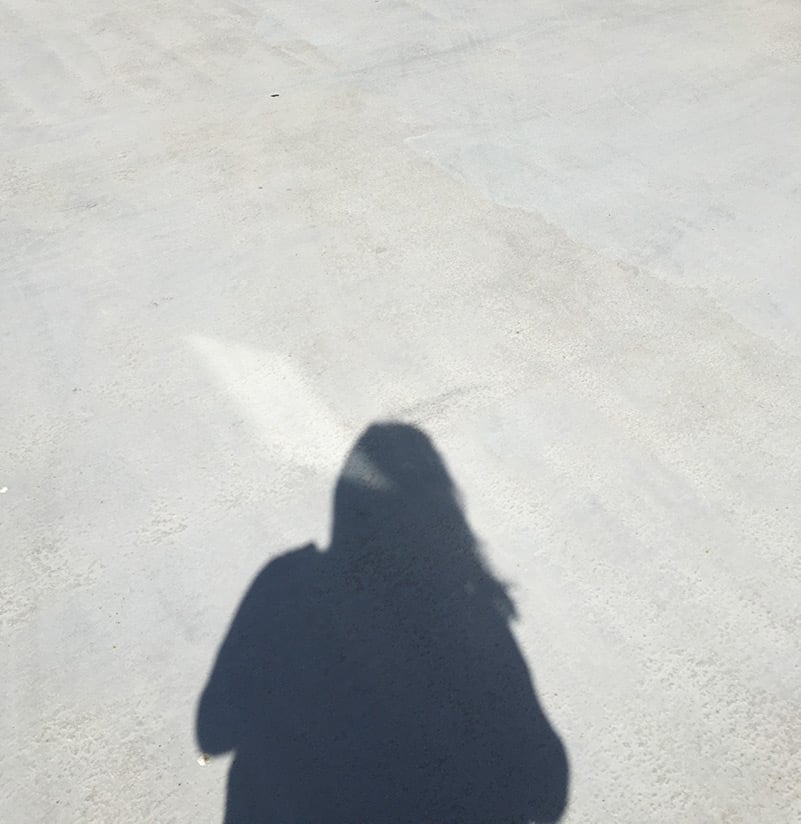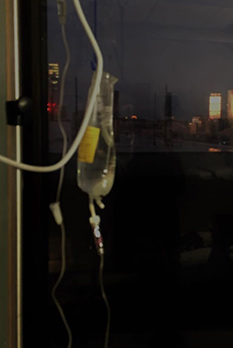Managing My Chronic Medical & Mental Health Conditions Amidst COVID-19
Posted on: 6/22/20
Posted by: Anonymous

The COVID-19 pandemic has negatively impacted our world in a multitude of ways, including our healthcare system. I find this aspect of the pandemic particularly challenging because I have multiple medical conditions that require regular and frequent treatment, including inpatient hospital stays and surgeries. Like many others, my healthcare has been affected by the pandemic. It has been harder to manage my medical conditions, which has consequently led to an increase in mental health symptoms. Luckily, I recognized the warning signs that I was declining, such as feeling a lack of motivation and not reaching out to friends. I knew that I needed to act swiftly to maintain my recovery and prevent spiraling downward. First, I identified the difficult situations I have been encountering, which include having to semi-isolate, not receiving my typical mental health and medical care, and the challenges related to accessing emergency care. Next, I listed the challenging aspects of each of these situations. Finally, I listed coping skills and ways to adapt. Stick around because I am going to break it down below!
Semi-Isolation
The first difficult situation that I am having to navigate is being on semi-isolation. My doctor recommended early on that I semi-isolate because I am at high risk for contracting COVID-19 and at high risk for a poor outcome after contraction. Semi-isolation in my situation translates to staying home, eliminating nonessential in-person interactions, and of course, adhering to public officials’ guidelines and recommendations.
CHALLENGE: Keeping Up with Responsibilities When Sick
Typically, I rely on my supports for help with tasks and physical chores (e.g. cleaning, laundry) when my health declines, which I refer to as a “flare-up.” It helps to lighten my load, so I can focus my energy on my priorities. Unfortunately, that is not an option right now because my friends and family cannot safely visit my apartment. It has been challenging, workable by following the tips listed below.
TIPS & COPING SKILLS
- SELF-CARE BREAKS. I have incorporated “self-care breaks” throughout the day to stay motivated and to gain an extra boost of energy. My favorites include:
- KenKen, which is a variation of the popular puzzle, Sudoku.
- Quick video chat with family and friends
- Social online games
- Making bracelets
- LEGO’s®
- DON’T BE TOO HARD ON MYSELF. Throughout the day I remind myself to be gentle with both my mind and body. It is impossible to do everything and that is OKAY!
CHALLENGE: Isolation’s Impact on Mental Health and Wellness
Human beings have an innate need for human interaction. Given that, it is no surprise that I feel lonely at times, particularly on days when my physical health is worse. I quickly discovered that remaining socially connected from a distance is necessary to keep my anxiety and depression at bay.
TIPS & COPING SKILLS
- TECHNOLOGY. Technology has been my mental health lifeline in this regard. Examples of how I use technology to prevent loneliness include:
- E-hangouts
- Social online groups. There are many recovery groups (e.g. NAMI Connection, The Mighty’s virtual events, National Eating Disorders Association Network virtual groups), as well as hobbies or general hangouts. Have your own idea? Grab some friends and try it out or start your own virtual meetup!
- Social online games. My favorites include Draw Something and Exploding Kittens.
- ACCOUNTABILITY. I have found it helpful to hold myself accountable by scheduling virtual get-togethers in advance
Adjusting to Changes in My Treatment
 Next, I am going to discuss what it has been like and how I have been coping with not receiving my usual mental health and medical care. Prior to the COVID-19 outbreak, my mental health treatment consisted of weekly in-person therapy sessions, in-person support groups, and regular in-person services provided by a community mental health agency. Before the pandemic, I also required frequent, in-person medical care. To manage my health conditions, I had multiple appointments every week, testing numerous times a month, Emergency Department visits as needed, multiple surgical procedures annually, and at least two inpatient hospitalizations annually. This has drastically changed since the outbreak. Currently, most of my mental health and medical care is conducted using telehealth, treatments have been cancelled, and procedures have been postponed. I still have to visit the hospital regularly for testing, appointments, and other healthcare related needs, though. And when I get there, I’m always taken aback by the shift in environment at the hospital. At first, I was overwhelmed by the changes, but I was able to identify the challenges and implement effective coping skills.
Next, I am going to discuss what it has been like and how I have been coping with not receiving my usual mental health and medical care. Prior to the COVID-19 outbreak, my mental health treatment consisted of weekly in-person therapy sessions, in-person support groups, and regular in-person services provided by a community mental health agency. Before the pandemic, I also required frequent, in-person medical care. To manage my health conditions, I had multiple appointments every week, testing numerous times a month, Emergency Department visits as needed, multiple surgical procedures annually, and at least two inpatient hospitalizations annually. This has drastically changed since the outbreak. Currently, most of my mental health and medical care is conducted using telehealth, treatments have been cancelled, and procedures have been postponed. I still have to visit the hospital regularly for testing, appointments, and other healthcare related needs, though. And when I get there, I’m always taken aback by the shift in environment at the hospital. At first, I was overwhelmed by the changes, but I was able to identify the challenges and implement effective coping skills.
CHALLENGE: Changes & Navigating My Care
I spend a considerable amount of time in-person with healthcare professionals to treat my complex medical and mental health needs. My providers provide a great deal of support and help me to not only live, but to live LIFE. Sadly, COVID-19 has put a halt to those visits. Most of my providers have switched to telemedicine services, while others have been deployed to a variety of healthcare settings to solely treat COVID-19 patients. It has been difficult to adjust, but thanks to various coping skills and strategies, I have been able to maintain recovery and manage my chronic illnesses.
TIPS & COPING SKILLS
- RAMP-UP SUPPORT SYSTEM: I alerted my support system that I may need a little extra support to fill in the gaps. I found this helpful, especially when I specified what support looks like to me.
- DO NOT DELAY CARE: At first, I was hesitant to contact my providers because I did not want to burden them with a non-emergent issue. I had assumed that they were tied up with COVID-19 related issues. I quickly learned that my assumption was incorrect. Once I connected with my providers, they encouraged me to keep reaching out and to not delay care. Since that time, we have been able to troubleshoot via phone, messaging, virtual visits, and in-person when absolutely necessary.
- UTILIZE TELEHEATLH: I have found virtual visits to be particularly helpful, even though I was initially nervous. I have been pleasantly surprised by some of the perks of telehealth. For example, I have found virtual visits to be more time efficient because I don’t have to leave the comfort of my home.
CHALLENGE: Tending to My Mental Health When Accessing Emergent Medical Care
As I mentioned above, needing to go to the Emergency Department is an inevitable part of my chronic illness. As COVID-19 peaked in my state of residence, I found myself being told by my doctors that I needed to go to the Emergency Department. This news came with a wave of emotions. I was scared to contract COVID-19 because I am immunocompromised and high risk, but I was even more scared that I would infect my family. I felt guilty that my family was worried and could not come inside. They allowed my family to wait outside with me while they secured a bed. I tried not to cry as I gave my family member a thumbs up and flexed my bicep as a signal of strength. Once inside, it was like nothing I have ever seen. I had a mix of emotions. I was happy to get the medical help I needed. The undeniable dedication and compassion of each hospital employee gave me a sense of hope. At the same time, it was heartbreaking, sad, scary, and anxiety provoking. I’m going to explain below how I dealt with these tough emotions until I was able to be safely discharged home.
TIPS & COPING SKILLS
- ASK QUESTIONS: I did not know what to expect upon arrival to the Emergency Department. I find that being well-informed puts my mind at ease, so I asked the on-call physician my questions prior to heading to the hospital. She was patient and answered every question and concern. It’s important to be informed and alert, not in the dark and anxious.
- HEADPHONES: While in the Emergency Room, it was difficult for me to adjust to what used to feel like a familiar environment. It was hard to ignore the increase in high acuity patients, the response required to treat that increase, and the subsequent conversations as people attempted to process their feelings. After about an hour, I realized that it was taking a toll on my mental health and I needed to find a way to block out the noise. I popped in noise cancelling earbuds and questioned why I had not done that sooner. Many hospitals offer free disposable ear plugs if you ask and are a viable alternative to headphones.
- LAUGH: I am not joking! It may seem strange, or even disrespectful, to find joy and laugh at a time when others are suffering, but it is not. We all need to practice self-care. Part of my self-care is incorporating humor into my life. After putting on my earbuds, I watched stand-up comedy, while simultaneously texting with a few supports.
As COVID-19 remains a pervasive presence, our healthcare system continues to respond and adapt to the current situation. Luckily, I have been able to do the same, primarily through the use of coping skills, such as the ones listed above. I still have days when it is harder to cope with physical isolation and the constant changes to my treatment, but those days are becoming few and far between. I have been able to manage most of my responsibilities independently with coping skills and through simple changes that have allowed the world to become more accessible to myself and many others with chronic illnesses. With the help of my treatment providers, most of my medical treatment is back on track, which has been an instrumental component of maintaining my mental health and recovery. I urge you all to take time out of your day to write down the challenging situations you may be experiencing and ways in which you can cope, troubleshoot, and adapt. While it may take time out of your day, it is worth it! Hang in there, we are all in this together!
